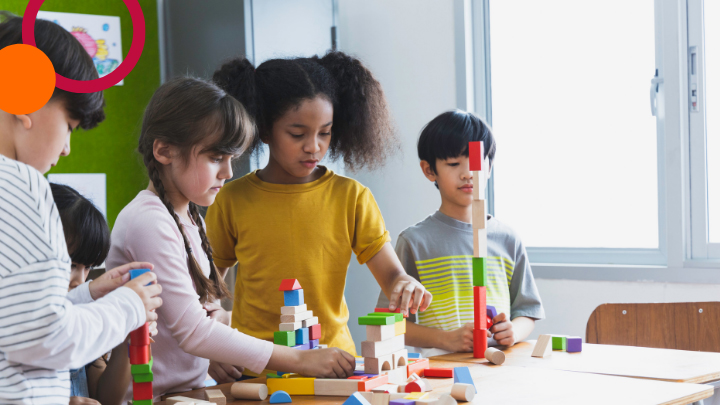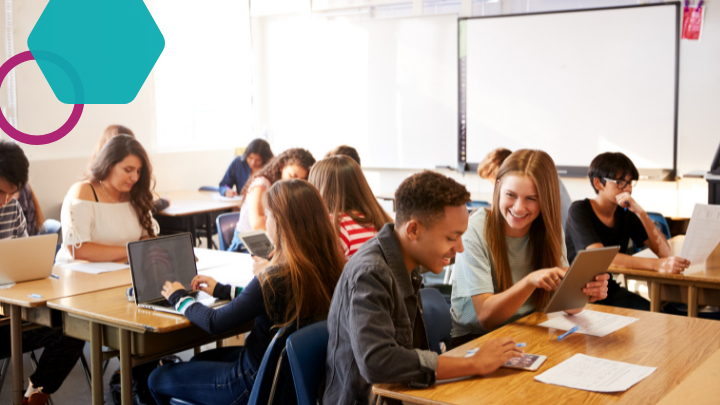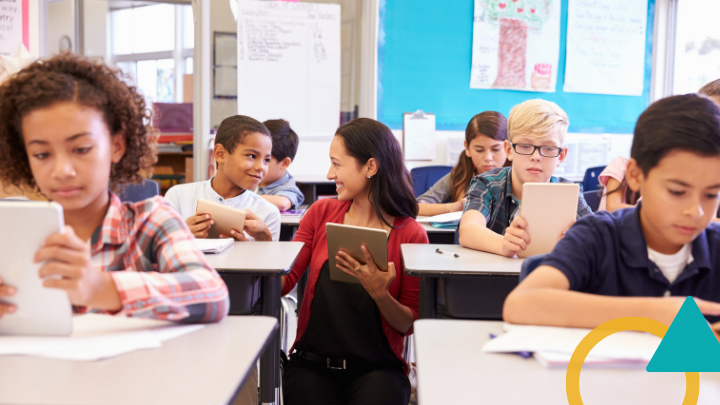The COVID-19 pandemic has forced many teachers to work harder than ever, adapting instruction in innovative ways to meet the needs of students. Many teachers are experiencing a multitude of feelings: exhaustion, worry about the unknowns of next year, and pride in their ability to adapt as well as possible on the fly. As we move into summer, take time to rest and recharge. If you’re already thinking about next year—a sentiment I have heard from many of the teachers and instructional leaders I coach—let’s think about how we can use what we learned during COVID-19. Specifically, many teachers have experimented during remote learning with strategies to better personalize learning. Let’s think about how we might bring those strategies back with us in the fall and build upon them—whether we’re still teaching remotely or back in the classroom.
Strategy #1: Flipped Learning (link)
What is it?: Students are introduced to new material through an asynchronous task (i.e. not in-person or in the group, but on their own), and apply or deepen their learning during class time.
When do I use it?: To shift the role of the teacher from delivering the content to coaching students to apply the information in a novel context. Also, to create more time in class for students to share their approaches to completing a task, and deepen student metacognition.
How does it work in distance learning?: Introduce new content by giving students a teacher-recorded mini lesson, a YouTube video, or an interactive Edpuzzle. Students watch the video on their own, and during a live class or in small group “coaching” sessions, students get a chance to apply what they learned by completing a task. You are there to support students as needed (answering questions, correcting misconceptions, modeling, troubleshooting difficulties).
How does it work in the classroom?: Introduce new content by giving students something to view or read for homework (like a video or text). During class time, students work on tasks that ask them to apply what they learned. Hold individual conferences or targeted support groups to meet students’ needs. Have students sign up for a meeting or move around the room to touch base with each group or student.
Strategy #2: Student Goal Setting and Reflection (link)
What is it?: Students set their own goals for their learning and regularly reflect on the strategies that helped (or didn’t help) them achieve their goals.
When do I use it?: This strategy builds up students’ skills as independent learners. Weave goal-setting into the fabric of the class by having students regularly set goals for their learning that are informed by past experience, data, and student interest.
How does it work in distance learning?: Students create a goal for each week as a way to check-in with you. They set a goal that is content-related or process-related (i.e., how a student is managing her/his/their time and energy during the week). They may add to an ongoing Google Doc or record their goal and progress on Flipgrid as one continuous thread. This helps you get a sense of what feels manageable to students given their unique circumstances at home.
How does it work in the classroom?: At the start of the year, students are introduced to the SMART goal framework and explore models of high-quality goals. Some teachers I coach use their own personal exercise goals as models (i.e., “I will run x miles keeping a pace of x minutes per mile”; “I will walk for x number of steps this week”). Start by setting a goal or two as a class before moving on to individual goals. At the start of each week or unit, students set a goal and determine the steps they will take to accomplish the goal. They track their goal-related activities and relevant data, and by the end of the week or unit, reflect on their progress (content and process). When family-teacher conferences come around, have students lead the discussion!
Strategy #3: W.I.N. (Whatever I Need) to Practice (link)
What is it?: Students have dedicated time with differentiated resources to work on the skills they need to improve (or extend, if they need a challenge).
When do I use it?: To support students who need additional practice or support with particular skill while others need a challenge.
How does it work in distance learning?: Students sign up for “coaching” or “office hours” to meet virtually with their teacher to get help with specific struggles or have the option to move into a breakout room with a teacher during a live virtual class. Students spend a certain amount of time each week in an adaptive or self-paced program like IXL that enables students to work on the skills they need to work on for as long as they need to work on them. This might take the form of a mild-medium-spicy choice board.
How does it work in the classroom?: Each week, or at a particular time each day, students have a period of time in which they are able to work on what they need. Students self-assess their level of mastery of a particular skill or piece of content the class is working on, and then complete the work for their self-selected mastery level. (Here is a great video of this in action.) Students learn to see the connection between the goal-setting strategy and WIN time as a chance to work towards completion of their goals!
Strategy #4: Personalized Pathways (link)
What is it?: Students work on a skill by choosing learning activities from a collection of resources, tracking progress as they go.
When do I use it?: To provide students with differentiated resources and activities to access content in a self-paced, self-directed way.
How does it work in In distance learning?: Students use a Google Doc choice board or a playlist on Sutori to complete various asynchronous activities each week and then log their activities in a journal. Students review material from earlier in the year if they did not master a particular skill or content understanding.
How does it work In the classroom?: Use resources you gathered to support students during distance learning and turn them into a pathway (a collection of resources and activities intended to move students along the “path” towards mastery of a specific standard). Similar to distance learning, assign pathways as homework. During WIN time, students choose to work on a pathway designed to support a standard they have not yet mastered. Students use a pathway tracker to monitor their progress. (Read more great tips on improving pathway effectiveness here.)
Strategy #5: Genius Hour (link)
What it is: For one hour each week, students get time to learn about a topic of personal interest.
When do I use it?: To amplify students’ intrinsic motivation for learning so you can teach independent learner skills like research, note-taking, goal setting, and time management within the context of a project students are passionate about.
How does it work in distance learning?: To spark more intrinsic motivation in students when there is inequitable access to technology or work is no longer graded, you assign open-ended tasks. For example: each day, share a question you had and how you found the answer! Ask students to share the research strategies and source evaluation they used to find a credible answer. Or, to add more structure, provide choice boards with tons of options.
How does it work in the classroom?: One day a week or one period a day, students learn about a topic of their choice—anything they want (that is appropriate for school). Students plan out what they want to research, perhaps a question they want to investigate, and by the end of the semester or year, they share out what they have learned with the class. Students are motivated to learn, and you can support students to learn about diverse topics by focusing on independent learner skills and connecting students with a project mentor with expertise on the topic.
There are many ways that what you are doing now to personalize learning for your students during COVID-19 will improve your instruction next year. These 5 personalized learning strategies are just a few of the student-centered shifts we’ve seen teachers make in the last two months. Pick a couple of strategies you want to bring back to the classroom. If you’re looking for even more ideas, search our library of strategies!






